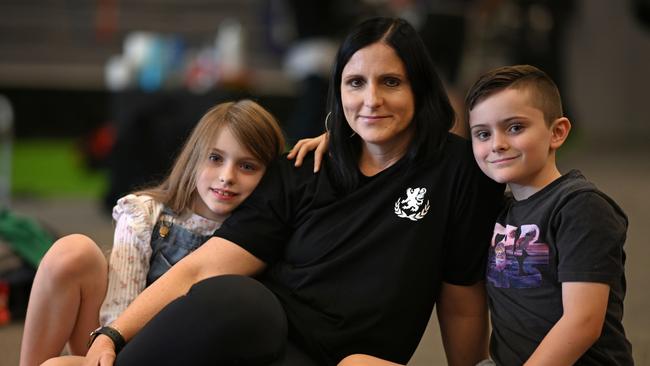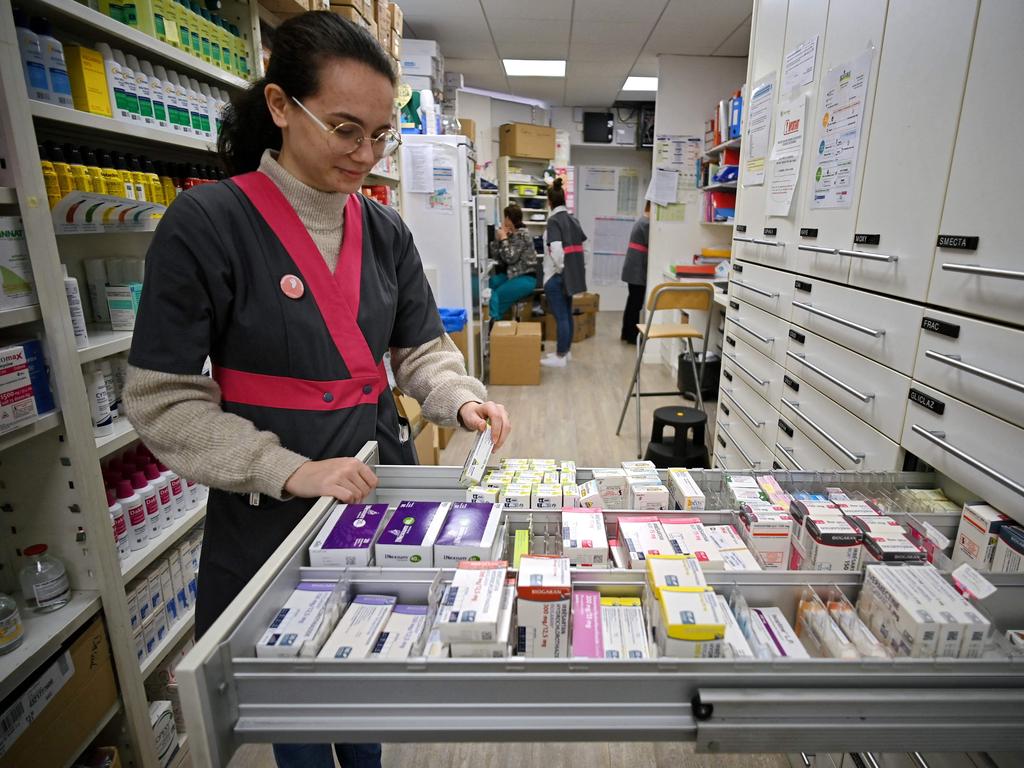Hope for women of end to chronic urinary tract infection pain
Top doctors are calling for an overhaul of guidelines on antibiotic treatment and testing for urinary tract infection as science confirms chronic infections result from embedded bacteria.

Australia is on the verge of scientific breakthroughs in the treatment of chronic urinary tract infections that leave hundreds of thousands of women suffering major disability, often for decades.
The groundbreaking developments in diagnostics for chronic urinary tract infections, which are estimated to cost the nation $1bn a year, come as top doctors call for an overhaul of guidelines on antibiotic treatment and testing.
A pediatric urologist at a major children’s hospital has demonstrated that intractable infections – long thought to be simply recurrent – are in fact a single chronic infection the body has been unable to eradicate.
Urinary tract infection affects one in three women in their lifetimes, and while most will clear the infection with a single course of antibiotics, for one in four of these patients, the infection is not eradicated and continues to cause periodic symptoms, sometimes for many years.
“I never thought this was going to go on all my life,” said one patient, Amber Sealey, 55.
“You’re going to the toilet every 10 minutes and screaming in pain. They’re telling you it’s all in your head. You don’t even ever want to go and see a doctor, because you just get treated so badly.”
Patients with chronic UTI experience debilitating symptoms including severe bladder, pelvic and urethral pain, bladder and pelvic pressure, urgency and frequency of urination, and incontinence. Many say medicine has utterly failed them and has offered them no viable treatment plan. Some cannot work or have sex or exercise, and some can barely even leave the house.
Deirdre Pinto, secretary of patient group Chronic UTI Australia, said: “I would describe that situation as incomprehensible. It is absolutely devastating how these women’s lives have been derailed by something that’s often thought of in the medical profession as trivial. It is far from trivial for these women. They are suffering, they’re in enormous pain, enormous distress. In the worst cases, marriages and livelihoods have broken down. People are experiencing very serious physical problems, kidney failure, pregnancy loss. And this condition is completely treatable.”
Now president of the Urological Society of Australia and New Zealand, professor Helen O’Connell, is calling for updated national therapeutic guidelines to address the issue of chronic UTI, which many doctors do not recognise as a condition, insisting people are experiencing recurrent infections rather than a chronic condition.
Professor O’Connell also wants updated official health information on the interpretation of urinary cultures and microscopy in pathology testing amid evidence standard midstream urine testing is highly inaccurate, and an overhaul of antibiotic guidelines.


UTI affects women and girls, and occasionally men, across all age groups and is particularly endemic in nursing homes, where it can cause symptoms of psychosis and is sometimes mistaken for dementia.
The call for guidelines and treatment change comes on the back of a major discovery at the The Children’s Hospital at Westmead, when pediatric urologist Ani Deshpande discovered in a bladder tissue sample taken from a 10-year-old child the presence of colonies of “embedded” bacteria within the little girl’s bladder cells.
This was highly significant because according to the medical textbooks, the bladder epithelium, which is the initial layer of cells, is impermeable.
Professor Desphande’s discovery confirms the developments in science over the past decade that have posited that, in some cases, an initial UTI will go on to become chronic because bacteria penetrates the lining of the bladder and establishes colonies of pathological bugs within the cells of the bladder wall.
These bacteria are then released into the bladder periodically, causing a re-emergence of UTI symptoms, which are usually deemed to be recurrent infections but in fact are a chronic infection continually reactivating.
“I think what has happened to us is we have been captives of our science,” Professor Desphande said. “And now the science is changing. I’ve seen enough of these patients who suffer a lot. Some patients do clear their infections. What about those who don’t? I have not seen any self-resolution of these patients in my practice. So there’s no reason to withhold treatment.”
The human demonstration of the “embedded infection” theory is highly significant internationally, with the hypothesis published to date in scientific papers only on the basis of animal studies, and still widely dismissed by doctors who refuse to prescribe long courses of antibiotics to treat the problem – currently the only treatment that appears to work.
“I was told to drink Ural and take cranberry,” says mother of four Lisa George who had chronic UTI for decades. “I was told it was all in my head and I needed better hygiene. I was told to take antidepressants. I’ve had a specialist say to me ‘‘the only thing I can do now is remove your bladder’. I was 28 years old. I wanted to have children. I didn’t want to live my life with a urine pouch. I felt I can’t live like this. This is not living. This is not even existing.”
Australian Medical Association president Steve Robson, an obstetrician and gynaecologist, has backed the call for an overhaul of guidelines and treatment.
“I think we’re at the point now where there’s sufficient evidence that there probably needs to be some national statement about this as a way of helping health practitioners around the country to understand the new paradigm,” Professor Robson said.
“To avoid harm, either the harm of under-treating or the harm of over-treating, we really need to take this seriously, form a consensus and do it soon.”
The embedded infection theory was first posited over a decade ago by UK scientist Harry Horsley together with British geriatrician James Malone Lee.
Malone Lee, who died in 2022, is renowned among patients for being one of the few doctors willing to effectively treat chronic UTI using long-term courses of antibiotics in the absence of any other available treatments currently.

The NHS in the UK has now recognised chronic UTI as a condition, as well as acknowledging the inadequacy of standard midstream urine testing which is estimated to fail to diagnose up to 50 per cent of infections.
Professor O’Connell said Australia “absolutely” should follow the UK in recognising chronic UTI. “When I read James Malone Lee’s work, it dovetails beautifully with the teaching I had in the 90s and then having been in practice for a long time,” Professor O’Connell said.
“When I went to a bladder science meeting at NIH in the US in the early 90s, it was pretty clear that on electron microscopy, you could see little colonies of bacteria in the cells. To me the idea of embedded infection is not news.”
There are now concerns that pharmacy prescribing for UTIs – the general course of treatment is three days of antibiotics – may present a danger to some women. Urologists say particularly severe infections require 10 days to two weeks of antibiotic treatment to ward off the risk of such infections becoming chronic. However differential diagnosis is extremely important in diagnosing UTI, urologists say, as similar symptoms can present in cancer, STD, thrush and chemical irritation.
There are also calls to recognise that long-term antibiotic treatment, continuously at high dose for months or even more than a year, may be required to treatment chronic UTI in some patients despite concerns over the effect on the bladder microbiome and fears of antibiotic resistance, given the infections can lead to kidney damage or even in extreme cases, sepsis which carries a risk of death.






To join the conversation, please log in. Don't have an account? Register
Join the conversation, you are commenting as Logout